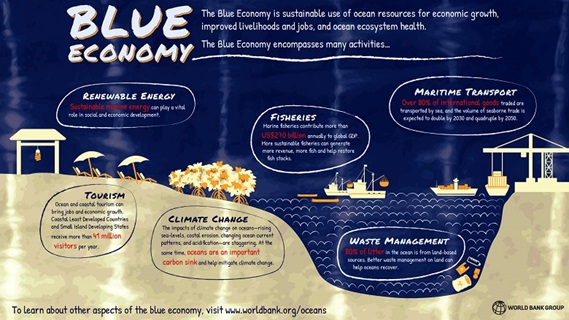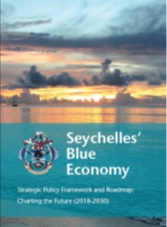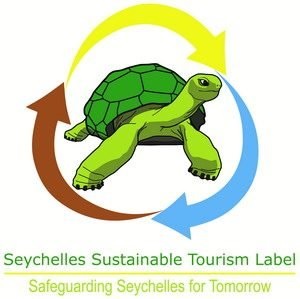The Contribution of Sustainable Tourism and Blue Economy towards SDGs – The Case of Seychelles
Sustainable tourism can be defined as “tourism that takes full account of its current and future economic, social and environmental impacts, addressing the needs of visitors, the industry, the environment and host communities”. The United Nations World Tourism Organisation (UNWTO) launched the Tourism and the Sustainable Development Goals (SDGs) Programme as a platform for sharing, inspiring and empowering the tourism sector to act on SDGs, contributing to a more sustainable future for people and planet.
Sustainable tourism creates opportunities in achieving the SDGs
Tourism is an economic powerhouse, generating US$7.6 trillion (10.2% of global GDP) and 292 million jobs in 2016 globally. This is equivalent to 1 in 10 jobs in the global economy. The tourism industry is growing, the latest UNWTO Annual Report concluded that in 2017, more than 1.3 billion people travelled as tourists internationally, which is 84 million (7%) more than 2016. We have seen an average growth of 4% per year for 8 consecutive years. Being one of the biggest and growing economic sectors in the world, tourism can become a vital contributor to sustainable development, by supporting job and wealth creation, environmental protection, cultural preservation and poverty alleviation. The Report highlighted three SDGs and targets that are particularly relevant to sustainable tourism.
 Target 8.9
Target 8.9
By 2030, devise and implement policies to promote sustainable tourism that creates jobs and promotes local culture and products.
 Target 12.b
Target 12.b
Develop and implement tools to monitor sustainable development impacts for sustainable tourism that creates jobs and promotes local culture and products.
 Target 14.7
Target 14.7
By 2030, increase the economic benefits of Small Island Developing States and least developed countries from the sustainable use of marine resources, including through tourism.
Blue Economy – Seychelles’ sustainable development model
The Seychelles consists of a group of 115 islands with around 95,000 inhabitants. Same as other small island developing states (SIDS), the Seychelles depend almost entirely on the ocean’s resource for both its economy and livelihood. Just like other parts of the world, its surrounding oceans faces a barrage of threats, from marine pollution and dwindling fish stocks, to the dramatic effect of climate change on coastal communities. Sustainable ocean development is intrinsic to citizens’ wellbeing as well as the economy.
The emerging concept of the Blue Economy, defined as sustainable use of ocean resources for economic growth, improved livelihoods and jobs and ocean ecosystem health, has been embraced by the Seychelles’ government to realise sustainable economic development based around their ocean. The Blue Economy encompasses tourism, which accounts for more than 50% of the Seychelles’ GDP and employment. The economic benefits generated from tourism can support the management, rehabilitation and restoration of marine natural resources. Given that tourism is highly dependent upon the quality of the natural environment, if properly managed, tourism can be a key funding source for the sustainable development of this nation.

(Source: World Bank Group, 2017)
The Seychelles’ Way – How sustainable tourism and Blue Economy achieve SDGs
Goal 8 Decent Work and Economic Growth: Policies to promote sustainable tourism
 As part of the Seychelles Sustainable Development Strategy, the Seychelles Sustainable Tourism Plan 2012-2020 guides the development of its tourism industry while integrating the national policies, principles and practices of sustainability in the daily operations of businesses and service providers. It is intended to ensure a balance between economic development and cultural, environment conservation and protection. As we are approaching 2020, the Seychelles government has been looking into how to build on its successful initiatives such as marine spatial planning and innovative financing through blue bonds to develop a prioritised agenda for action and investment to 2030.
As part of the Seychelles Sustainable Development Strategy, the Seychelles Sustainable Tourism Plan 2012-2020 guides the development of its tourism industry while integrating the national policies, principles and practices of sustainability in the daily operations of businesses and service providers. It is intended to ensure a balance between economic development and cultural, environment conservation and protection. As we are approaching 2020, the Seychelles government has been looking into how to build on its successful initiatives such as marine spatial planning and innovative financing through blue bonds to develop a prioritised agenda for action and investment to 2030.
In January 2018, the Seychelles government approved Seychelles Blue Economy Strategic Framework and Roadmap (the Blue Economy Roadmap or the Roadmap) which take SDGs and Paris Agreement into consideration. Under the Roadmap, policies will be set up to prioritise creating high value jobs and social equity. The Roadmap aims to improve access to quality education and professional training, new jobs and employment opportunities.
Goal 12 Responsible Consumption and Production: Tools to monitor sustainable development impacts
 Assessments, such as periodic audits, are conducted to evaluate the progress towards sustainable development from the beginning of the SSDS to its completion. For tourism-related initiatives, quarterly reports, stakeholders’ meetings/workshop and internal ministerial committee discussions will also be used to measure the progress and impact. The Blue Economy Roadmap targets to develop a monitoring and evaluation framework which takes advantage of global indicators and the SDG indicators including a midterm review as an adaptive policy measure.
Assessments, such as periodic audits, are conducted to evaluate the progress towards sustainable development from the beginning of the SSDS to its completion. For tourism-related initiatives, quarterly reports, stakeholders’ meetings/workshop and internal ministerial committee discussions will also be used to measure the progress and impact. The Blue Economy Roadmap targets to develop a monitoring and evaluation framework which takes advantage of global indicators and the SDG indicators including a midterm review as an adaptive policy measure.
Seychelles Sustainable Tourism Label, a voluntary and user-friendly certification programme designed to encourage hotels in Seychelles to mainstream sustainability practices into their business operations to safeguard the biodiversity and culture of Seychelles, was launched in 2012. Hotel operators gain assistance of improving the sustainability of their operations and will be recognised if improved impacts are seen.
Goal 14 Life Below Water: Increasing the economic benefits from the sustainable use of marine resources
In 2016, the Seychelles completed the debt-for-nature conversion with The Nature Conservancy, raising funds to buy US$21 million of Seychelles’ sovereign debt, and direct the funds to climate change adaptation, sustainable fisheries, and marine conservation projects. As part of the deal, the Seychelles rolled out a comprehensive Marine Spatial Plan, which will cover their entire marine area of almost 1.4 million2 km. The government successfully demonstrated its global Blue Economy leadership credentials, driving an ambitious agenda to capture sustainable value from its ocean while also securing 30% (410,0002 km) of the ocean area.
The Seychelles is leading the way with innovative financing tools to develop economically while protecting its natural resources. The first Blue Bond, valued at US$15 million, was launched in October to support the Seychelles’ transition to sustainable fisheries. These financial models can be replicated across small islands and other coastal countries.
The Seychelles presents an example of how to integrate their national development strategies i.e. Blue Economy and its alignment with global agenda like the SDGs through sustainable tourism. To learn more, contact us at info@csr-asia.com.
